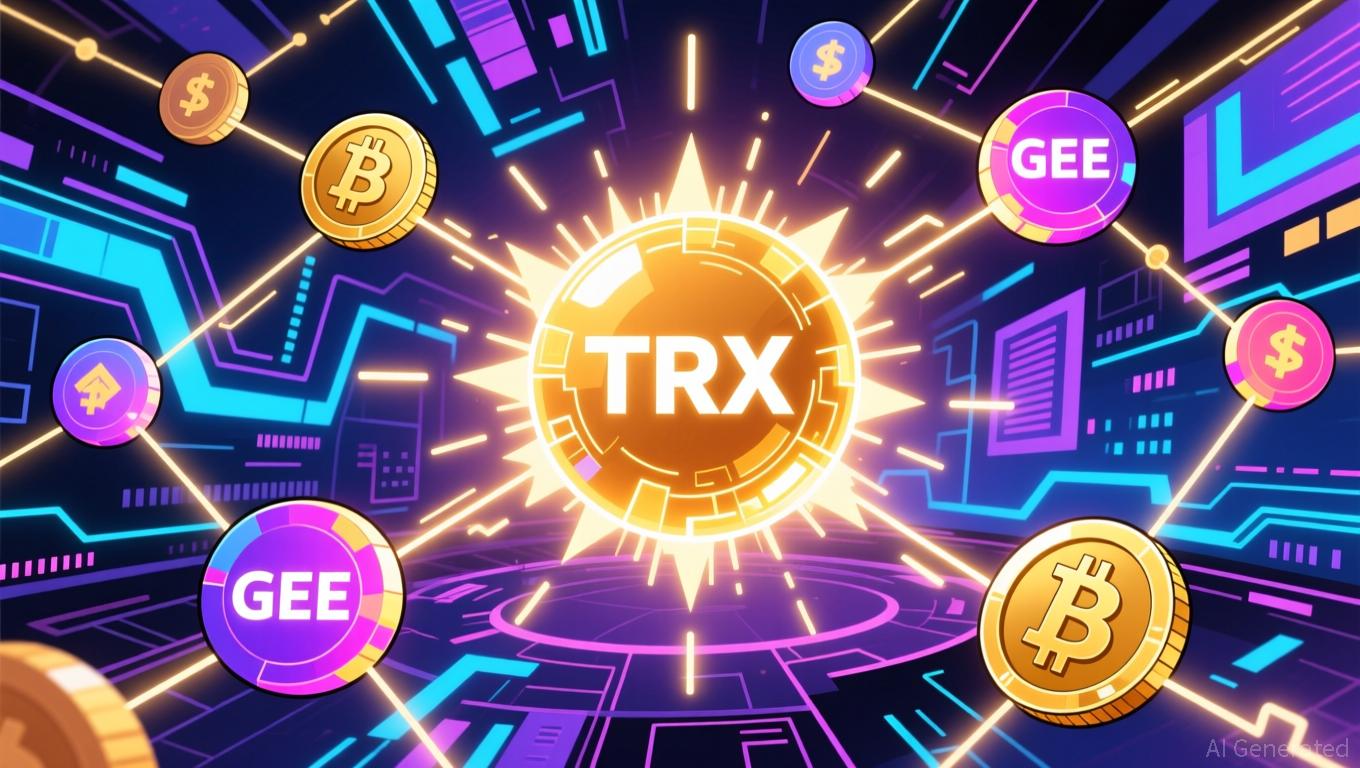Ethereum News Today: Is Ethereum’s Shrinking Supply a Real Driver for Growth or Just Exaggerated Buzz?
- Ethereum faces liquidity crisis as 40%+ of ETH is locked in staking, ETFs, and dormant wallets, creating supply constraints. - Record 6.84M ETH ($28B) absorbed by US ETFs, with corporate holdings exceeding 12% of total supply amid 4.3% staking yields. - Shrinking circulating supply and deflationary mechanics (EIP-1559 burns) fuel bullish forecasts for ETH price surges above $4,952. - Critics dismiss supply narrative as overhyped, noting ETH remains below 2021 highs despite months of tightening liquidity.
Ethereum is facing an escalating liquidity shortage as supply becomes increasingly restricted. On-chain statistics reveal that more than 40% of all ether (ETH) is now locked away in staking, exchange-traded funds (ETFs), or inactive wallets. This significant "supply vacuum" has led to diminished selling activity and heightened institutional interest, prompting speculation that
Several mechanisms are contributing to the shrinking available supply. Roughly 29.5% of
This trend has been accelerated by growing institutional participation. U.S.-listed ETFs now hold 6.84 million ETH—valued at $28 billion—representing 5.6% of the total supply. Publicly traded companies, such as Tom Lee’s Bitmine, collectively own more than 12% of ETH, with some aiming to control 5% of the circulating supply. For example, SharpLink Gaming possesses 839,000 ETH, resulting in unrealized profits exceeding $900 million. These corporate holdings echo Bitcoin’s treasury strategies, but are further enhanced by Ethereum’s average staking returns of 4.3%.
The effects on price are already apparent. Ethereum’s reserves on Binance have dropped to historic lows, indicating less selling as the price approaches the $4,600 resistance level. Blockchain analysts highlight that, in previous cycles, sharp drops in exchange balances often preceded price pullbacks. However, this time, significant withdrawals have aligned with upward price momentum. According to CryptoQuant’s Arab Chain, ETH’s Binance supply ratio has decreased to 0.33, nearing its lowest point since 2025, as more investors move their assets to decentralized storage and staking platforms.
Optimism is further fueled by Ethereum’s deflationary features. Since the merge, net issuance has turned negative during periods of high network activity, with EIP-1559’s burn mechanism destroying more ETH than is created. The combination of staking lockups and ETF holdings accelerates this trend, reducing the liquid supply at a pace not seen in previous cycles. Analysts such as Crypto Gucci believe that the current environment—marked by strong institutional demand, limited liquid supply, and ongoing supply absorption—creates ideal conditions for significant price growth.
Yet, some experts remain skeptical. Detractors argue that the supply shortage narrative is overstated, noting that ETH has not yet exceeded its 2021 all-time high despite months of tightening supply. Currently trading at $4,100, Ethereum is still below its previous peak, though it has maintained important support levels. Technical analysts suggest that a breakout above $4,952 could open the door for further gains.
The next few months will be crucial for Ethereum. With the Fusaka upgrades improving scalability, potential approval of staking ETFs increasing institutional inflows, and macroeconomic trends such as M2 growth influencing valuations, the market is poised for a decisive move. Whether Ethereum sets a new record or faces renewed doubts will depend on how these factors—supply constraints, institutional interest, and overall market sentiment—play out in the near term.
Disclaimer: The content of this article solely reflects the author's opinion and does not represent the platform in any capacity. This article is not intended to serve as a reference for making investment decisions.
You may also like
Institutional Interest Drives HBAR's Potential for a 50% Rally
- HBAR , Hedera's token, faces potential 50% surge as technical breakouts and institutional adoption align. - Price突破 $0.1373 support and triple-bottom pattern suggest $0.17–$0.19 targets with sustained volume. - Canary Capital's HBAR ETFs and Coinbase derivatives highlight growing institutional interest amid regulatory clarity. - Hedera's AI upgrades and partnerships with BitGo/LayerZero strengthen utility, while SEC guidance accelerates fund approvals.

Kazakhstan's Daring Shift: Swapping Gold's Security for the Unpredictable Promise of Cryptocurrency
- Kazakhstan's central bank plans to invest $300M in crypto using gold reserves to diversify its financial portfolio amid global inflation hedging trends. - Emerging economies like Bhutan and Turkey are leveraging blockchain for financial infrastructure upgrades and fiat currency alternatives amid economic instability. - Central banks in China, India, and Turkey are accumulating gold while exploring hybrid assets like gold-anchored crypto tokens to stabilize economies. - Despite regulatory delays and marke

GeeFi Brings Together 14 Blockchains to Address Crypto Ecosystem Fragmentation
- Tron's 60% fee cut boosts stablecoin dominance, driving USDT transfers and attracting developers via Ethereum-standard smart contracts. - GeeFi (GEE) emerges as a cross-chain solution, integrating 14 blockchains including Tron to address crypto fragmentation with its non-custodial wallet. - GeeFi's $250K+ presale and 55% APY staking rewards highlight its deflationary model, while VISA/Mastercard crypto card plans expand real-world utility. - Market volatility from Fed policies and inflation data undersco

India’s Policy Realignment and U.S. Trade Overhauls Poised to Boost Technology Shares by 2025
- U.S.-India trade reforms and strategic realignment are projected to boost Indian tech stocks by 2025, driven by rising global demand for domestic technology solutions. - India's merchandise exports grew 2.9% YoY in Q1-Q3 2025, supported by government credit guarantees and diversification into markets like UAE and Vietnam. - Kaynes Technology India Ltd reported 58.4% YoY revenue growth, reflecting strong demand for Indian software and IT services despite sector-wide economic uncertainties. - Strategic LPG
